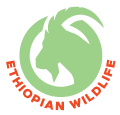Ethiopia is home to a wide variety of rare and endangered animal species due to the country’s high biodiversity and beautiful landscapes. Ethiopia’s natural legacy, as well as the country’s ecological balance and sustainable development, depend on the preservation and conservation of its exceptional biodiversity. Ethiopia’s wildlife is both a cultural and commercial asset, since ecotourism
draws visitors and helps the country’s economy thrive.The Ethiopian Wildlife Conservation Authority (EWCA) is the country’s primary wildlife protection agency. The EWCA was established in 2008 as a government institution to oversee the protection, administration, and sustainable use of Ethiopia’s fauna. To guarantee the protection and preservation of Ethiopia’s distinctive fauna, the authority plays a crucial role in developing policies, executing conservation plans, and coordinating with other stakeholders.
To build a comprehensive framework for animal conservation, the Ethiopian animal Conservation Authority collaborates closely with local communities, NGOs, and international partners. The EWCA’s goal is to protect the wide variety of animal species and their habitats in the country via a combination of scientific study, public involvement, and law enforcement.
The authority’s principal goals are the conservation of endangered species, the repair and extension of protected areas, and the development of wildlife-based tourism that does not deplete natural resources. The EWCA’s goal is to strike a balance between conservation and the economic and social progress of local people by tackling the threats to Ethiopia’s wildlife.
Rare primates like the gelada baboon may be found in Ethiopia with more well-known animals like the Ethiopian wolf and Walia ibex. Loss of habitat, poaching, and global warming are just a few of the dangers these special creatures face today. The EWCA is working hard to make sure that Ethiopia’s precious wildlife will be around for future generations to enjoy.

